Top Reasons to Discover the Benefits of Switching to LED Lighting
The benefits of switching to LED lighting are numerous. LEDs lower your energy bills, last much longer, and deliver superior light quality compared to traditional bulbs. This article delves into these advantages to aid your decision-making.
Key Takeaways
-
Switching to LED lighting offers substantial energy efficiency and cost savings, reducing energy consumption by up to 90% compared to traditional incandescent bulbs, which can lead to significant financial benefits over time.
-
LED lights provide a longer lifespan and reduced maintenance costs, lasting up to 50,000 hours compared to the 1,000-hour lifespan of incandescent bulbs, making them a more sustainable and cost-effective choice.
-
LED lighting has numerous environmental benefits, including lowering carbon emissions and being free of harmful substances like mercury, making it an eco-friendly option that contributes to reduced environmental impact.
0 Introduction
LED lighting technology is the most energy-efficient and rapidly developing lighting technology available today. LED, which stands for light-emitting diodes, operates by passing an electrical current through a microchip, illuminating the tiny LEDs and producing the light we see. This simple yet highly effective mechanism has made LED lighting a preferred choice for both residential and commercial settings due to its unparalleled energy efficiency, cost savings, and extended lifespan.
Switching to LED lighting offers several benefits:
-
Financial benefits: LED lights are energy-efficient and can significantly reduce energy bills.
-
Enhanced comfort and versatility: LED lights provide bright and focused lighting, making it easier to perform tasks and create different moods in your living or working spaces.
-
Eco-friendly choice: LED lights consume less energy and have a longer lifespan compared to traditional lighting options, reducing your carbon footprint and making a positive impact on the environment.
Energy Efficiency and Cost Savings
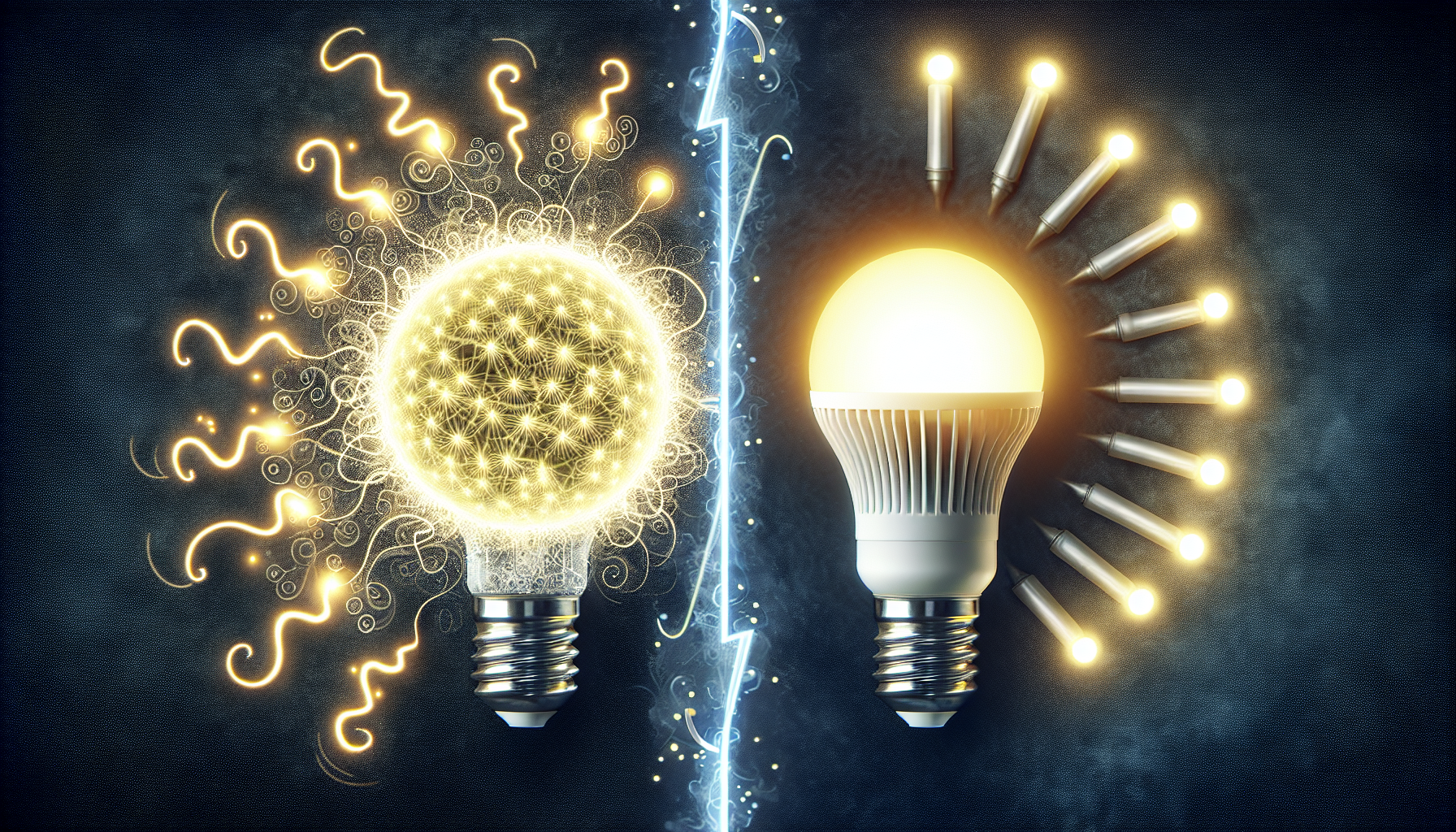
One of the most compelling reasons to switch to LED lighting is its remarkable energy efficiency and the consequent cost savings. LEDs are known for their ability to consume significantly less energy than traditional lighting options, which translates to lower energy bills and long-term financial benefits. Projected annual energy savings from LED lighting could exceed 569 TWh by 2035. This would be equivalent to the annual energy output of over 92 1,000 MW power plants. Adopting LED lighting leads to substantial reductions in energy consumption and costs in both residential and commercial settings.
The benefits of LED lighting include:
-
Lower energy consumption
-
Long-term financial savings
-
Longer lifespan compared to traditional lighting options
-
Fewer replacements and lower maintenance costs over time
-
Potential savings of over $5,000 annually in utility costs for a single school
These benefits make switching to LED lighting a wise investment for both homeowners and businesses.
Lower Energy Consumption
LED bulbs are renowned for their energy efficiency, consuming up to 90% less energy than traditional incandescent bulbs. This substantial reduction in energy use not only leads to significant energy savings but also lowers overall energy bills. Unlike incandescent bulbs that release 90% of their energy as heat, LEDs emit very little heat, making them much more efficient at converting energy into light. Moreover, LEDs direct light in a specific direction, reducing the need for additional reflectors and diffusers and further improving their efficiency. This makes LED lighting solutions ideal for a wide range of applications, from residential to commercial and industrial settings, where energy efficiency is a top priority.
Long-Term Financial Savings
The long-term financial savings from switching to LED lighting are substantial. The high efficiency and extended lifespan of LED bulbs result in significantly lower energy consumption and reduced lighting costs over time. For example, UK homeowners save an average of £240 annually by switching to LED lighting, while a single school can save over $5,000 annually in utility costs by replacing fluorescent lights with LEDs. These savings are not just limited to households; businesses also benefit from lower operational costs due to reduced energy consumption and fewer replacements.
The key benefits of upgrading to LED lighting include energy savings, reduced electric bills, and longer bulb life compared to other conventional options.
Durability and Longevity
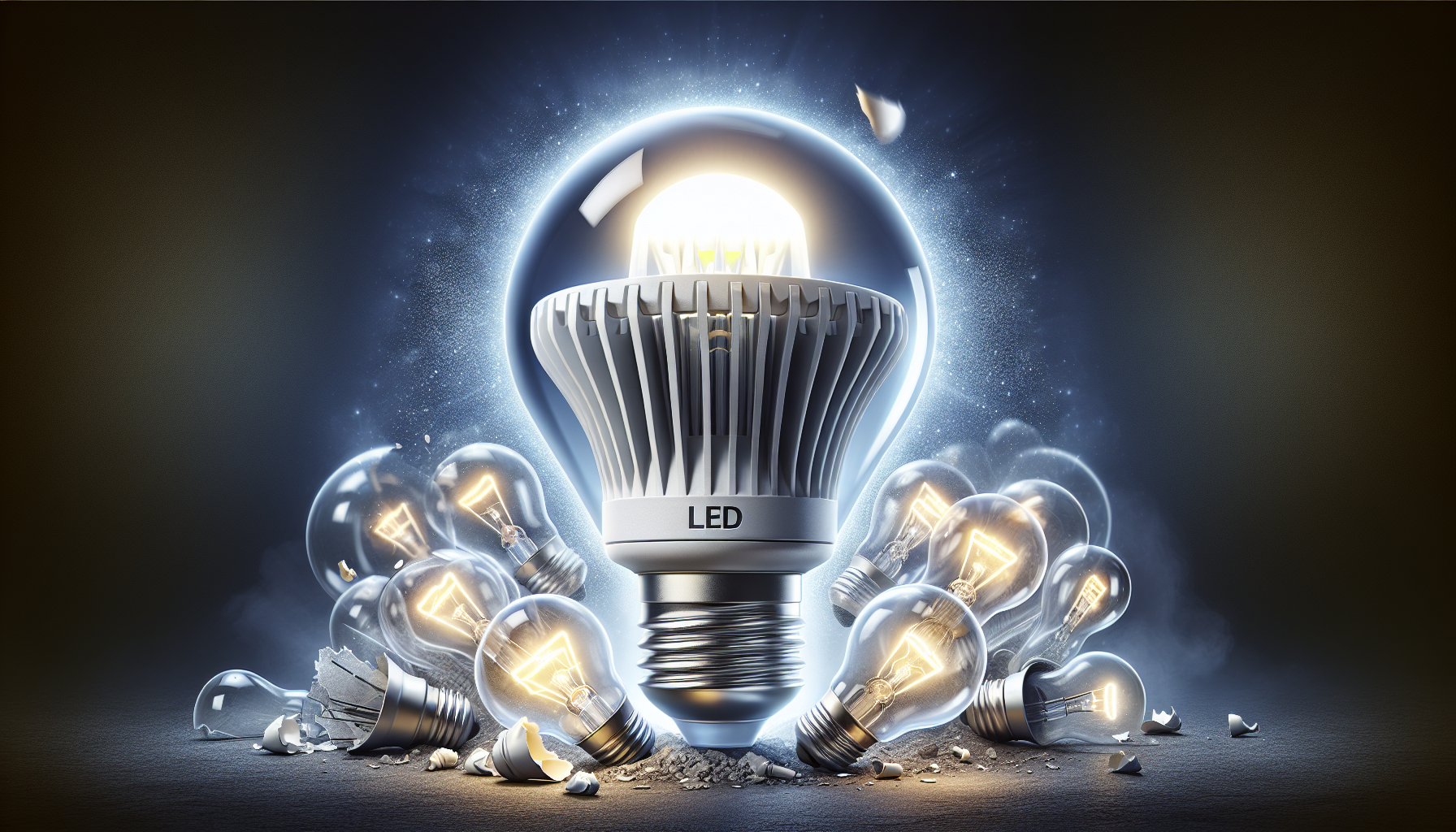
Another significant advantage of LED lighting is its durability and longevity. LED lighting products typically last much longer than other types of lighting, with high-quality LED bulbs lasting up to 25 times longer than incandescent bulbs. This impressive lifespan means fewer replacements, which not only reduces the hassle of frequent bulb changes but also lowers overall maintenance costs. For example, an average incandescent bulb lasts around 1,000 hours, whereas an LED light can last around 50,000 hours, making it a more sustainable and cost-effective lighting solution.
The reduced need for replacements and maintenance translates to lower maintenance costs over time. LEDs’ durability means they are less prone to damage and can withstand rough conditions better than traditional bulbs. This makes LED lighting a reliable choice for both indoor and outdoor applications, ensuring consistent performance and long-term savings on maintenance costs.
Lifespan of LED Bulbs
Quality LED light bulbs can last up to 25 times longer than traditional incandescent light bulbs, significantly minimizing the need for replacements and maintenance. While an average incandescent light bulb lasts around 1,000 hours, LED lights can last up to 50,000 hours, making them a more sustainable and cost-effective choice.
This extended lifespan not only reduces the frequency of replacements but also contributes to environmental responsibility by reducing waste.
Reduced Maintenance Costs
The longer lifespan of LEDs results in fewer replacements and lower maintenance costs over time. The durability of LEDs means they are less prone to damage and can withstand rough conditions better than traditional bulbs, further reducing the need for frequent maintenance and repairs.
This translates to significant savings in both time and money, making LED lighting a practical and economical choice for various applications.
Environmental Benefits
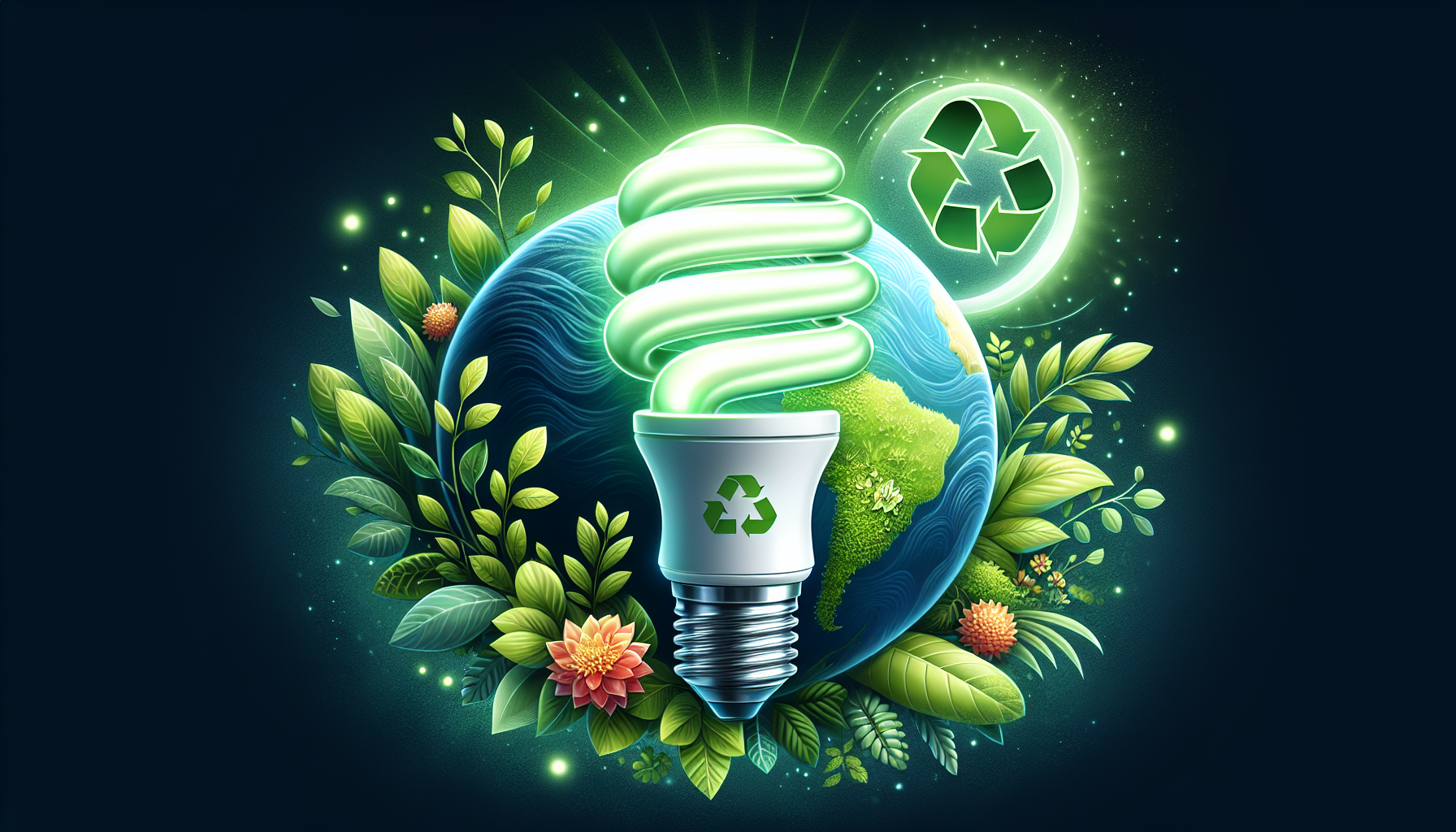
LED lighting offers numerous environmental benefits, making it an eco-friendly choice for both residential and commercial settings. One of the most significant advantages is the reduction in carbon footprint. LED lights consume less energy, which means lower carbon emissions and a smaller environmental impact. In fact, LEDs emit 50% less CO2 than compact fluorescent lights (CFLs), contributing to lower greenhouse gas emissions. Adopting LED lighting contributes to global efforts to reduce air pollution and combat climate change.
In addition to reducing carbon emissions, LED lights offer several environmental benefits:
-
They do not contain any hazardous materials such as mercury, making them safer for both human health and the environment.
-
The disposal of LED bulbs carries fewer environmental risks compared to traditional bulbs containing hazardous materials.
-
LED lights are 100% recyclable, contributing significantly to reducing environmental waste and promoting sustainability.
These environmental benefits make LED lighting a responsible and eco-friendly choice for anyone looking to make a positive impact on the planet.
Reduced Carbon Footprint
Choosing LED lighting can significantly reduce your overall carbon footprint due to lower energy consumption. LEDs lower energy use, which in turn reduces carbon emissions and air pollution. Some benefits of LED lighting include:
-
Lower energy consumption
-
Longer lifespan
-
Reduced maintenance costs
-
Environmentally friendly
-
No harmful substances like mercury
For example, wider adoption of LEDs is expected to replace off-grid kerosene lighting, eliminating associated greenhouse gas emissions.
Furthermore, LED lighting could prevent 14.45 to 15.69 gigatons of carbon dioxide equivalent emissions from 2020 to 2050, making it a crucial component in global efforts to mitigate climate change.
No Hazardous Materials
LED lights do not contain any toxic chemicals, including mercury, making them a safer and more eco-friendly option compared to traditional lighting solutions. The absence of mercury in LED lights means they pose fewer risks to human health and the environment during disposal and recycling.
Additionally, LED lights produce far less waste and are easy to recycle, further contributing to environmental sustainability. These qualities make LED lighting a responsible choice for anyone looking to reduce their environmental impact and promote a healthier planet.
Enhanced Light Quality
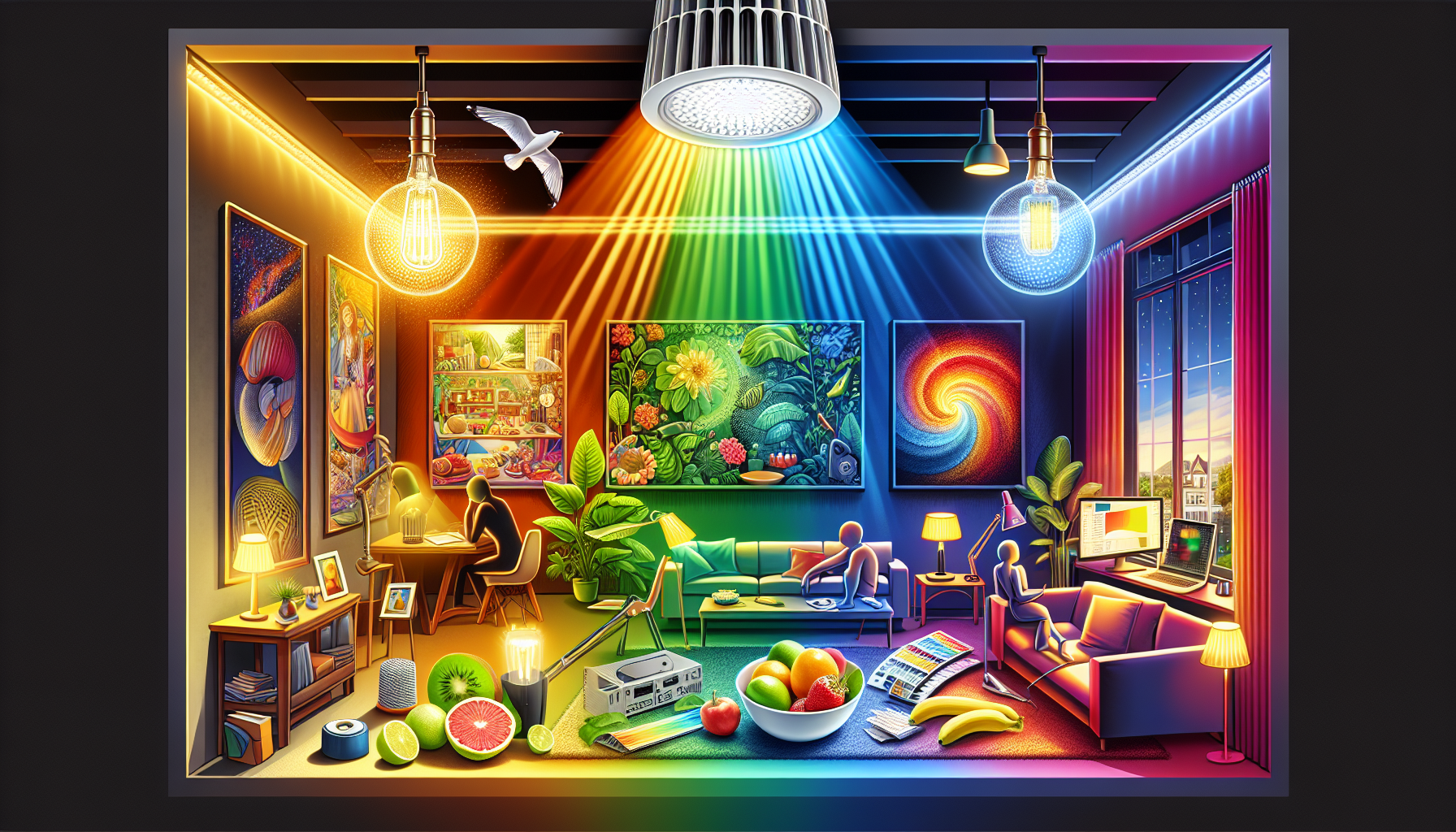
LED lighting stands out for its superior light quality, characterized by enhanced color rendering and customizable color temperatures. High-quality LEDs achieve a high Color Rendering Index (CRI), making colors appear more vibrant and true to life. This is particularly important in settings where color accuracy and aesthetics are crucial, such as retail stores, art galleries, and homes. The advanced technology in LEDs ensures consistent light quality over their lifespan, reducing flicker and glare, and providing a uniform distribution of light that enhances visibility and reduces shadows.
In addition to superior color rendering, LED lights offer:
-
Customizable color temperatures, allowing you to create the perfect ambiance for any setting
-
Warm, relaxing light for a cozy living room
-
Cool, task-oriented light for a workspace
This versatility makes LED lighting an ideal choice for a wide range of applications, from residential to commercial and specialty settings.
Superior Color Rendering
High-quality LEDs have advanced color rendering capabilities that make them suitable for settings where accurate color representation is essential. A low CRI in lighting can result in washed-out and dull appearances, whereas a high CRI can make colors pop and look more appealing. This makes LED lighting a perfect choice for applications such as retail stores, art galleries, and homes, where color accuracy and aesthetics are of utmost importance.
Customizable Color Temperatures
LED lighting can be adjusted to different color temperatures to create various ambiances and suit different settings. For example, warmer LEDs (2700K-3000K) are preferred in residential areas for their cozy and inviting atmosphere, while cooler LEDs are ideal for task-oriented environments. This flexibility makes LED lights suitable for a wide range of applications, from creating a relaxing home environment to enhancing productivity in workspaces.
The ability to customize color temperatures adds to the versatility and appeal of LED lighting solutions.
Health and Well-Being
LED lighting positively influences health and well-being, affecting aspects like mood, productivity, and eye strain. Proper LED lighting can enhance mood, focus, and overall productivity in various environments. For instance, exposure to stable, consistent light from LEDs can improve energy levels and mood, resulting in a more vibrant and motivated workplace environment. Additionally, the color temperature of LEDs can be tailored to influence human circadian rhythms, enhancing concentration, improving mood, and regulating sleep patterns.
Moreover, LED lighting provides stable, consistent light without flicker, which significantly reduces the risk of eye strain and headaches. Unlike traditional fluorescent and incandescent lights, LEDs do not flicker and are free from UV emissions, making them safer for environments sensitive to UV light. This makes LED lighting an ideal choice for settings where reducing eye strain and maintaining visual comfort are important, such as offices, schools, and healthcare facilities.
Improved Mood and Productivity
Proper LED lighting can enhance mood, focus, and overall productivity in various environments. Exposure to stable, consistent light from LEDs can improve energy levels and mood, resulting in a more vibrant and motivated workplace environment. Additionally, the color temperature of LEDs can impact mood, with warm temperatures promoting relaxation and cool temperatures enhancing focus.
Some benefits of LED lighting include:
-
Enhanced mood and energy levels
-
Increased focus and productivity
-
More vibrant and motivated workplace environment
-
Ability to adjust color temperature for desired mood and focus
In office settings, proper LED lighting can lead to a 3% to 5% increase in worker productivity, making it a valuable investment for businesses.
Reduced Eye Strain
LED lighting provides stable, consistent light without flicker, reducing the risk of eye strain and headaches. The flicker-free operation of LED lamps significantly reduces eye strain and the risk of headaches, making them a safer and more comfortable option for various settings. Additionally, LED lights do not emit ultraviolet (UV) emissions, which further lowers the risk of eye strain and makes them suitable for environments sensitive to UV light.
This makes LED lighting, which produces a bright light, an ideal choice for offices, schools, and healthcare facilities where visual comfort is crucial.
Versatility and Design Flexibility
The versatility and design flexibility of LED lighting make it suitable for a wide range of applications. The compact size of LED lights, roughly the size of a flake of pepper, allows them to be used in various settings, from small devices to large sports arenas. This flexibility enables LED lights to perform well at any dimming level, from 5% to 100%, without losing efficiency, making them ideal for both functional and decorative purposes. Whether you need recessed downlights for a sleek ceiling design or powerful LED floodlights for outdoor security, LED lighting can meet your specific needs.
LED lighting offers several benefits, including:
-
Maintaining performance and efficiency in varying temperature ranges, both indoors and outdoors
-
Reliable performance and long-term reliability in different environmental conditions
-
Attractive and flexible installation options that seamlessly integrate with modern design aesthetics, enhancing the overall appeal of any space
Wide Range of Applications
LED lighting is incredibly versatile, making it suitable for a wide range of applications, from residential to commercial and specialty settings. For instance, LEDs are ideal for lighting tight spaces such as under-cabinet areas in kitchens, thanks to their small and directional design. In commercial settings, LED high bay lights provide quality illumination in large spaces with high ceilings, such as warehouses.
Additionally, museums use LED lighting to illuminate sensitive items like artwork without UV damage, while theaters utilize LED lights to enhance movements, dimensions, and moods on stage. This wide range of applications highlights the many benefits of LED lighting and its adaptability to different environments and needs.
Aesthetic and Functional Designs
LED lights are available in various shapes and sizes, allowing for creative and functional lighting designs that can seamlessly integrate with modern aesthetics. For example, LED panel lights are flat and slim, making them ideal replacements for traditional ceiling lights in offices and homes. LED oyster lights provide soft, ambient lighting suitable for creating a relaxed atmosphere in homes and offices.
Additionally, LED floodlights are powerful units suitable for lighting outdoor areas, often used for security purposes. These aesthetic and functional designs make LED lighting a versatile and attractive choice for enhancing the visual appeal of any space while maintaining energy efficiency. Compact fluorescent lamps, on the other hand, offer an alternative option for energy-efficient lighting.
Smart Lighting Integration
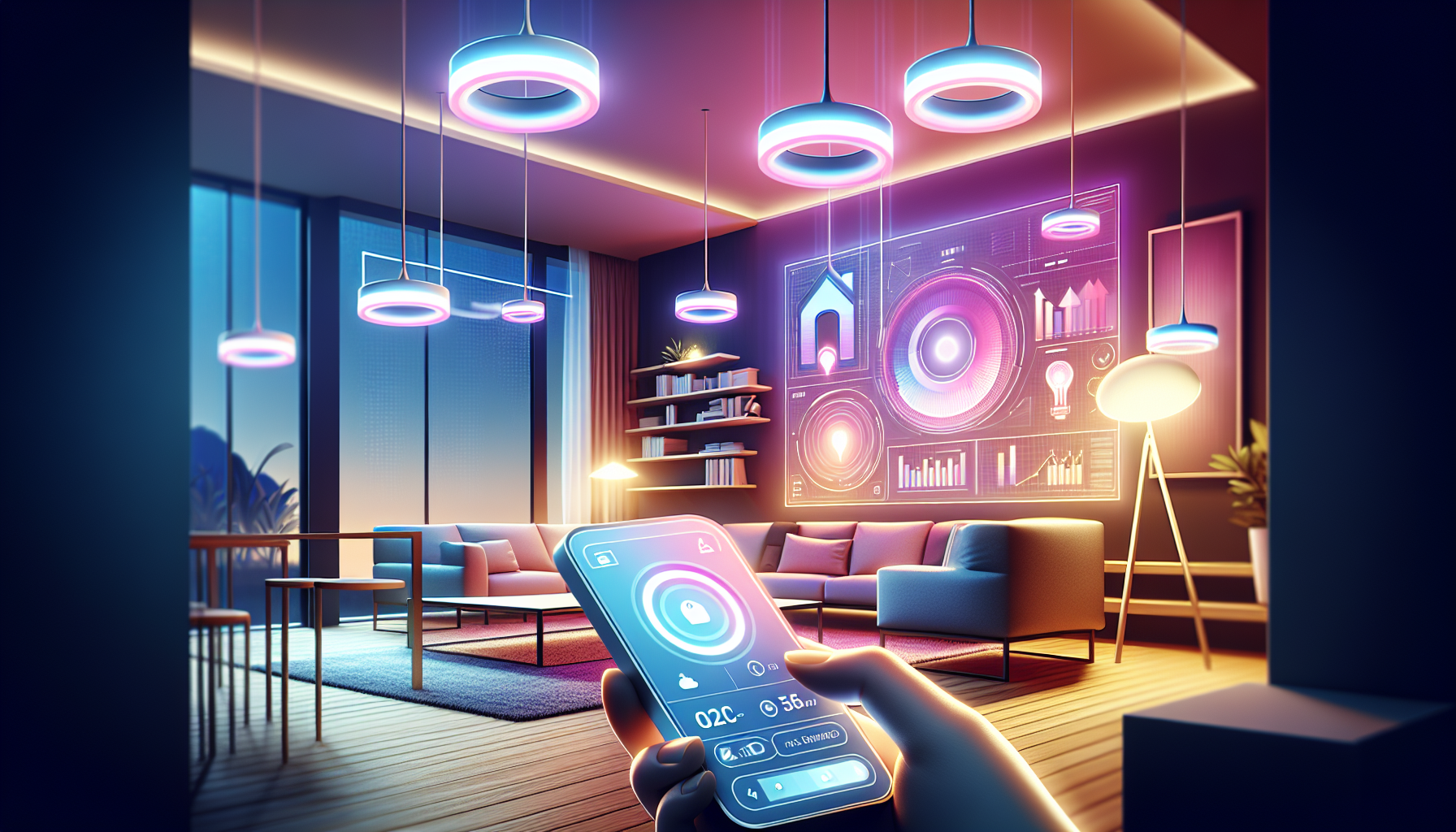
The integration of LED technology with smart lighting systems is one of its most exciting advancements. Smart lighting allows for customization, ease of use, better energy management, and improved control over the lighting environment. By connecting LED lighting systems to the Internet of Things (IoT), users can monitor and control their lighting remotely, adjust color temperatures to fit the time of day, and even use sensor technology to detect the presence of people or daylight. This level of control and customization enhances the overall lighting experience and ensures that lighting is used only when necessary, reducing energy wastage.
Moreover, smart lighting systems can adapt the color temperature automatically, providing cold light in the morning and warm light in the evening, which can positively influence human circadian rhythms and enhance well-being. LED lights also integrate easily with occupancy sensors, further enhancing their smart lighting capabilities. This makes LED lighting a perfect choice for both residential and commercial settings looking to implement advanced energy management and create a more comfortable and efficient lighting environment.
Remote Control Capabilities
Smart lighting systems offer remote control capabilities, allowing users to adjust their LED lights via mobile apps using connections like WiFi or Bluetooth. This feature provides convenience and flexibility, enabling users to control light settings such as dimming and color temperature from anywhere.
For example, LED smart poles used in cities integrate with IoT to offer energy-saving benefits through centralized remote control and monitoring, making urban lighting systems more efficient and responsive. These remote control capabilities make LED lighting an ideal choice for modern, connected environments.
Energy Management Systems
Integrating LED lighting with energy management systems offers several benefits, including:
-
Monitoring and reducing energy consumption in real-time
-
Providing actionable insights for facility managers
-
Using lighting only when necessary, reducing energy wastage
-
Lowering energy bills
For example, energy management software like mySiteIQ can provide real-time monitoring and control of LED lighting systems, allowing for efficient energy management and reduced greenhouse gas emissions. These systems make LED lighting a smart choice for businesses and organizations looking to optimize their energy use and achieve sustainability goals.
Incentives and Rebates
The adoption of energy-efficient LED lighting solutions is more financially viable due to government incentives and utility rebates. The Energy Policy Act of 2005 (EPAct) offers tax deductions for businesses that improve the energy efficiency of their buildings, including LED lighting upgrades. Under EPAct179D, businesses can receive tax deductions of up to $5.00 per square foot for making energy-efficient upgrades, such as installing LED lighting. These government incentives are designed to offset the costs associated with energy-efficient improvements, making it easier for businesses and homeowners to switch to LED lighting.
In addition to government incentives, utility companies often provide rebates for customers upgrading to energy-efficient LED lighting solutions. These rebates can significantly reduce the upfront costs of LED lighting upgrades, making the transition more affordable for both residential and commercial customers. For example, in the Energy Savings Scheme, customers can get rebates by upgrading to LED lights with the help of approved suppliers.
These incentives and rebates highlight the many benefits of switching to LED lighting and make it a financially attractive option for anyone looking to reduce their energy consumption and costs.
Government Incentives
Government programs offer various incentives, such as tax deductions, to encourage the adoption of energy-efficient LED lighting solutions under the Energy Policy Act (EPAct). For instance, qualifying retrofits under EPAct179D must demonstrate a 25% reduction in Energy Use Intensity and can receive tax deductions of up to $5.00 per square foot. These deductions can be claimed every 3 years for commercial buildings and every 4 years for government buildings, covering projects completed from 2006 onwards.
Additionally, the Inflation Reduction Act of 2023 increased the tax deduction range under EPAct 179D, making it even more attractive for businesses to invest in energy-efficient upgrades.
Utility Rebates
Utility companies frequently offer rebates for customers who install energy-efficient LED lighting solutions, making the transition more affordable. These rebates can significantly reduce the upfront costs of LED lighting upgrades, providing financial savings for both residential and commercial customers.
For example, in the Energy Savings Scheme, customers can get rebates by upgrading to LED lights with the help of approved suppliers, further incentivizing the adoption of energy-efficient lighting solutions. These utility rebates make it easier for customers to switch to LED lighting and enjoy the many benefits of reduced energy consumption and costs.
Summary
In summary, switching to LED lighting offers a multitude of benefits, including significant energy savings, long-term financial savings, enhanced light quality, and positive impacts on health and well-being. LED lights are also environmentally friendly, reducing carbon emissions and containing no hazardous materials. Their versatility and design flexibility make them suitable for a wide range of applications, and their integration with smart lighting systems provides additional convenience and energy management capabilities. With government incentives and utility rebates available, the transition to LED lighting is not only beneficial but also financially attractive. Embrace the future of lighting with LED technology and experience the many benefits it has to offer.
Frequently Asked Questions
How much energy do LED bulbs save compared to incandescent bulbs?
LED bulbs can save up to 90% more energy compared to incandescent bulbs, leading to substantial cost savings on energy bills.
How long do LED bulbs last compared to traditional incandescent bulbs?
LED bulbs can last up to 25 times longer than traditional incandescent bulbs, with an average lifespan of about 50,000 hours. This difference in lifespan makes LED bulbs a more durable and long-lasting lighting option.
What are the environmental benefits of switching to LED lighting?
Switching to LED lighting offers environmental benefits such as reducing carbon emissions, eliminating hazardous materials, and being 100% recyclable, making it an eco-friendly choice.
Can LED lights be integrated with smart lighting systems?
Yes, LED lights can be integrated with smart lighting systems to enable remote control, customization, and advanced energy management. This integration provides flexibility and energy efficiency.
Are there any financial incentives for switching to LED lighting?
Yes, the government offers incentives and utility companies give rebates to support the switch to energy-efficient LED lighting, making it more financially feasible.








